Surge protection device (SPD) for a private house
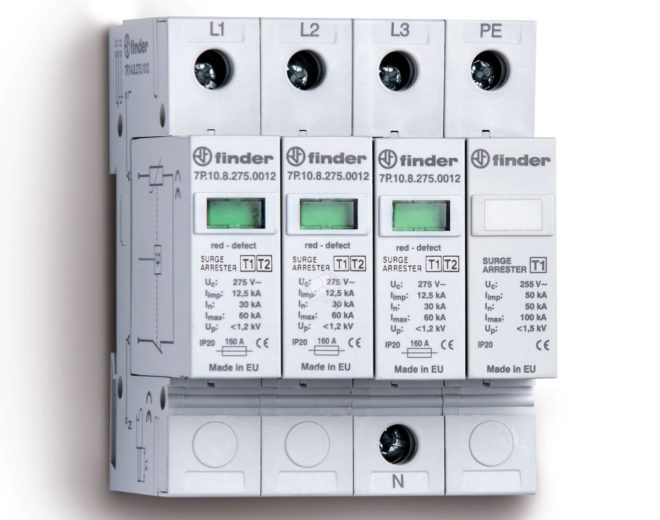
Surge voltage is a short-term sharp increase in voltage in the electrical network. Despite the fact that this leap does not last long (fractions of a second), it is extremely dangerous both for the line and for the energy consumers connected to it. To prevent damage to the cable and electrical devices, surge protection devices are used. In this article, we will talk about what these devices are, what types they are, and also consider how SPDs are connected for a private house.
Content
Causes of impulse overvoltage
IP can occur for both technological and natural reasons. In the first case, a sharp drop in the potential difference occurs when a switching overload occurs at the transformer substation, from where a particular line is powered. Impulse overvoltage caused by natural causes occurs when, during a thunderstorm, a powerful discharge strikes the lightning protection of a structure or an electrical transmission line. Regardless of what caused the voltage surge, it can be very dangerous for the home power grid, therefore, an SPD must be connected to effectively protect against it.
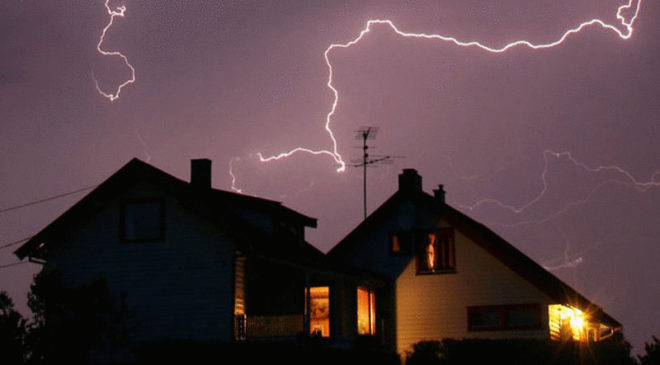
Why do you need to connect an SPD?
In order to protect the electrical network and the devices connected to it from powerful current pulses and sudden voltage surges, a device is installed to protect the line and equipment from impulse voltages (abbreviated designation - SPD). It includes one or more non-linear elements. The connection of the internal components of the protective device can be done both in a certain combination and in different ways (phase-phase, phase-earth, phase-zero, zero-earth). In accordance with the requirements of the PUE, the installation of an SPD to protect the network of a private house or other separate building is carried out only after an introductory machine.
Visually about the SPD in the video:
SPD types
These devices can have one or two inputs. Connection of both single-input and double-input devices is always carried out in parallel with the circuit, the protection of which they provide. In accordance with the type of non-linear element, SPDs are divided into:
- Commuting.
- Limiting (mains voltage limiter).
- Combined.

Switching protective devices
Switching devices in normal operating mode are characterized by high resistance. When there is a sharp increase in the voltage in the electrical network, the resistance of the device instantly drops to a minimum value. Arresters are the basis of the network protection switching devices.
Line surge arresters (arresters)
The surge arrester is also characterized by high resistance, which gradually decreases as the voltage increases and the electric current increases. A gradual reduction in resistance is a hallmark of limiting SPDs. The mains overvoltage limiter (SPD) has a varistor in its design (this is the name of a resistor, the resistance value of which is in a nonlinear dependence on the voltage acting on it). When the voltage parameter exceeds the threshold value, there is a sharp increase in the current flowing through the varistor.After smoothing the electrical impulse caused by a switching overload or lightning strike, the mains voltage arrester (arrester) returns to its normal state.
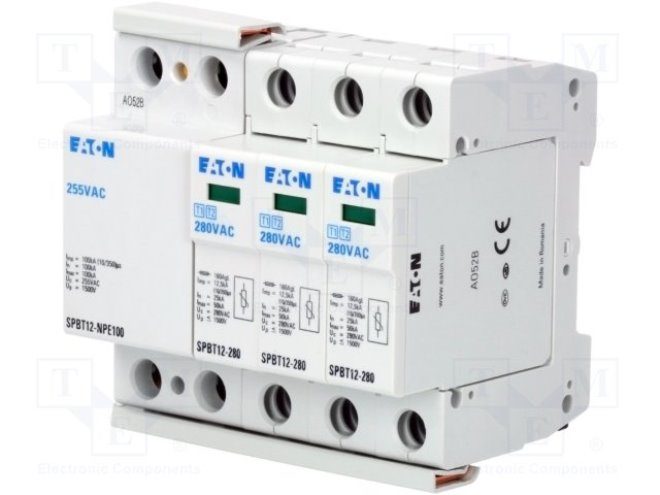
Combined SPD
Combined type devices combine the capabilities of switching and limiting devices. They can both commute the potential difference and limit its increase. Combined instruments can perform both tasks simultaneously if required.
IP protection device classes
There are 3 classes of line overvoltage protection devices:
Class I devices are installed in a switchboard or lead-in cabinet and provide network protection against impulse overvoltage, when an electrical discharge during a thunderstorm enters a power line or lightning protection.
Class II devices provide additional protection of the electrical line against damage caused by lightning strikes. They are also installed in the case when it is necessary to protect the network from impulse voltage surges caused by switching. They are installed after class I devices.
A story about SPDs from ABB specialists in the video:
Class I + II devices provide protection for individual residential buildings. These devices are installed near electrical equipment. They play the role of the last barrier, smoothing the residual overvoltage, which is usually insignificant. Devices of this class are available in the form of specialized power outlets or plugs.
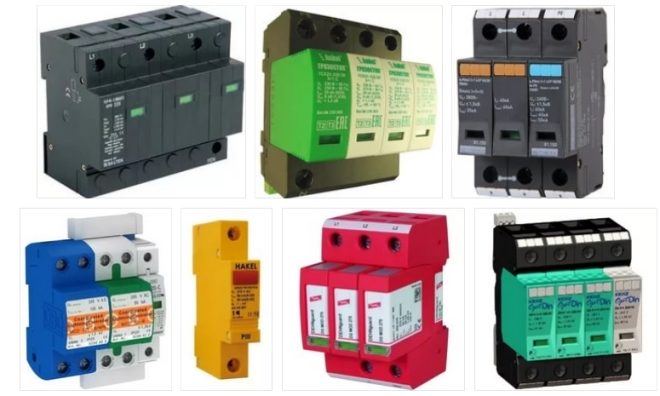
The simultaneous installation of class I, II and III devices guarantees three-stage protection of the electric line from impulse voltage surges.
How to connect an SPD in a private house?
Protective devices can be connected to household electrical networks (with one phase and an operating voltage of 220V) and to current-carrying lines of industrial facilities (three phases, 380V). Based on this, the complete SPD connection diagram provides for the effect of the corresponding voltage indicator.
If the role of grounding and neutral conductor is played by a common cable, then the simplest single-block SPD is installed in such a scheme. It is connected as follows: a phase conductor connected to the input of a protective device - an output cable connected to a common protective conductor - protected electrical appliances and equipment.
In accordance with the requirements of modern electrical documentation, the neutral and grounding conductors should not be combined. Based on this, in new houses, a two-module device is used to protect the circuit from voltage surges, which has three separate terminals: phase, neutral and ground.
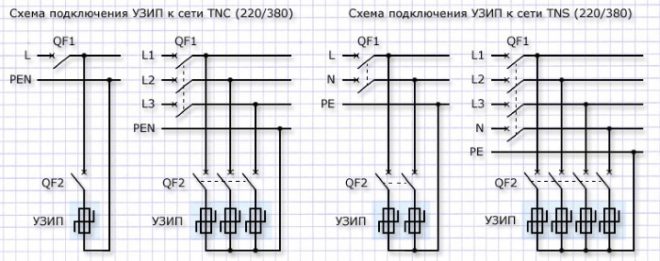
In this case, the device is included in the circuit according to a different principle: the phase and neutral cable go to the corresponding terminals of the SPD, and then by a loop to the equipment connected to the line. The grounding conductor is also connected to its terminal on the protective device.
In each of the described cases, the excessive current generated by the overvoltage is discharged into the ground through the earth cable or the common protective conductor, without affecting the line and the equipment connected to it.
Answers to questions about SPDs on video:
Conclusion
In this article, we talked about what an SPD is, what types these devices are and how they are classified, and also figured out how they are connected to the protected circuit. Finally, it must be said that the use of this device, unlike an RCD, in the power supply line of a private house is not mandatory. Connecting it to the network in each individual case requires taking into account the individual grounding scheme, as well as the placement of the GZSH and the introductory machine. Therefore, before purchasing and installing an SPD, we strongly recommend that you consult an experienced electrician.




